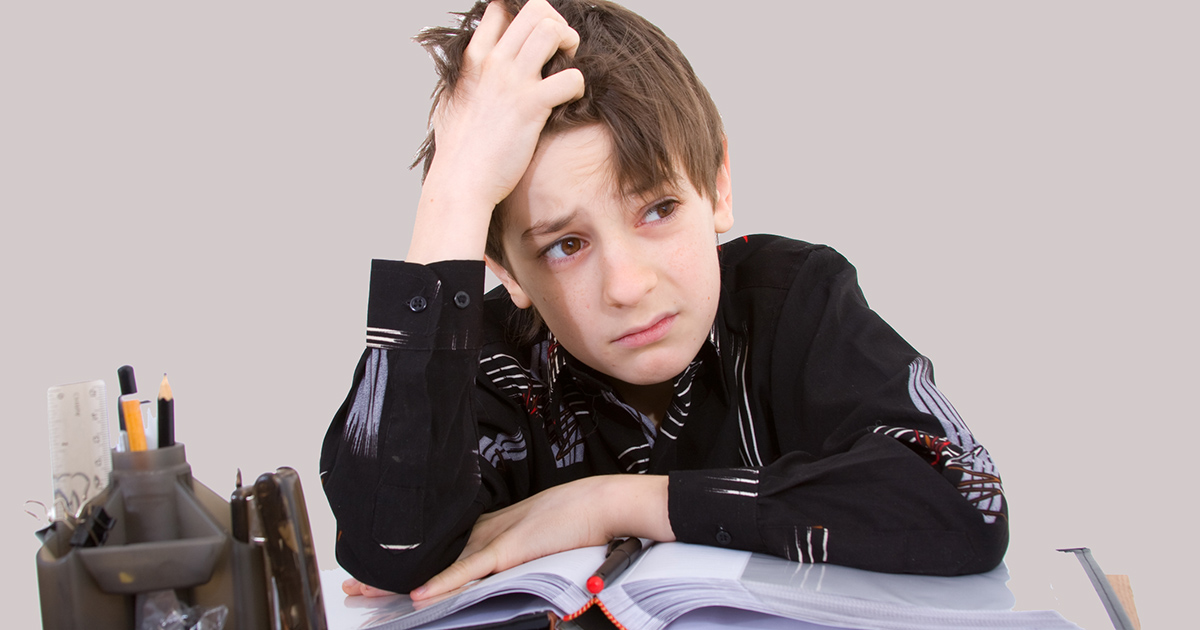ADHD Vs. ADD: Understanding The Difference
Attention deficit hyperactivity disorder (ADHD) and attention deficit disorder (ADD) are a prevalent concern for people all over the world, affecting the learning and activity of one out of every ten children. An estimated 6.4 million children are diagnosed with ADHD or ADD in the United States alone. People with ADD or ADHD often get distracted easily and fidget, but telling the difference between the disorders can be quite tricky. Often ADD and ADHD are mistaken for each other, or the names are used interchangeably. However, there are apparent differences between the two disorders.
What Are ADD And ADHD?

ADHD and ADD are disorders that affect the learning ability by decreasing the child’s ability to pay attention and stay focused. Although they are frequently viewed as such, the disorders are not learning disabilities. However, they can often be present in addition to a learning disability. ADHD and ADD can interfere with the everyday activities of the diagnosed child, affecting their abilities both at school and at home. Children diagnosed with one of these conditions have a difficult time paying attention, controlling their behavior and are sometimes affected by hyperactivity.
Before your child is diagnosed, you may want to note their symptoms. The Centers for Disease Control and Prevention (CDC) has a checklist to assist in keeping track of the signs.Â
Keep reading to understand the different types of ADHD and ADD.
ADHD And The Different Types

Children with ADD - also known as ADHD with inattention - are not hyperactive. They do not have high energy levels like other children with ADHD, and may seem shy or as if they are often daydreaming. Children with ADD are harder to diagnose because their symptoms may be mistaken for daydreaming, shyness, or timidness.
Children with ADHD with hyperactivity and impulsivity have plenty of energy and are often moving and fidgeting. Children with ADHD with hyperactivity and impulsivity areÂeasier to diagnose due to their more noticeable physical symptoms.Â
Now that you can recognize the difference between ADD and ADHD, continue reading to discover the signs and symptoms to look for.
Signs And Symptoms To Look For: ADD or ADHD With Inattention

The CDC has criteria for diagnosing ADHD with inattention in children sixteen and under with six or more of the following symptoms. To diagnose adolescents and adults seventeen years and older, they must have five or more symptoms that have been present for six months or longer.
Symptoms of ADD with inattention include often failing to give attention to details or careless mistakes, having difficulty holding attention on the task at hand, and seemingly not listening when being directly spoken to. Other symptoms include not following instructions, having challenges with organization, avoiding or disliking tasks that require a mental effort over an extended period, easily losing things, being often and easily distracted, and continued forgetfulness.Â
Keep reading to learn about the signs to be aware of for children with ADHD.
Signs And Symptoms To Look For: ADHD With Hyperactivity And Impulsivity

The CDC’s criteria for diagnosing ADHD with hyperactivity and impulsivity is the same as diagnosing ADHD with inattention. However, the symptoms vary slightly. The symptoms of ADHD with hyperactivity and impulsivity in children include fidgeting, squirming, or tapping of the hands or feet. Other signs include, the child leaving their seat when they should remain seated, running or climbing when it is not necessary or appropriate, showing an inability to take part in quiet leisure activities, talking excessively, blurting out answers before the question has been completed, having a difficult time waiting for their turn, and often interrupting others.
Now that you know all of the signs and symptoms to look for when detecting ADHD with hyperactivity and impulsivity, read further to learn all about the social and familial effects it can have on a person.
Social And Familial Effects Of ADHD And ADD

There are many social and familial effects of those diagnosed with ADHD or ADD, as well as those around them. ADHD and ADD can alter the behavior of a child due to their difficulty concentrating and their disruptive behavior. The common social effects on a child coping with ADHD or ADD include becoming the class clown or bully or refusing to be involved in group activities.
Family members may also be affected by a patient being diagnosed with either ADHD or ADD, causing frustration or guilt due to their inability to focus, or having a difficult time keeping up with the activity and impulsivity of the person.Â
Keep reading to discover the emotional impacts ADHD and ADD can have on an individual.
Emotional Effects Of ADHD And ADD

There are quite a few emotional effects to ADD and ADHD that can further make the child feel isolated and/or confused. There is the possibility they have been frustrated for quite some time, which can lead to other emotional and physical stress. Some of the emotional effects include frustration due to their inability to follow through and complete tasks, low self-esteem, anxiety, depression, and withdrawal.
If the child buries their emotions and feelings, it may come out in the form of physical symptoms, such as headaches, stomach aches, backaches, or pain in their limbs.Â
With this in mind, continue reading to learn all about the best methods of management and treatment of ADD and ADHD.
Management And Treatment

There are many ways that patients can manage and treat their ADD and ADHD. For starters, anyone affected should turn to healthy diet tips that can assist in managing their disorder, as well as get plenty of exercise and a good night’s sleep. Aside from that, they can be given more assistance and guidance from their parents and teachers, they can receive behavior therapy through meeting with a therapist, and they can be assessed on medications. Often those who are diagnosed will be prescribed stimulants - which can help reduce the symptoms of ADD and ADHD by seventy to eighty percent. However, it is best to speak to a licensed doctor upon deciding which methods of management and treatments would work best for the individual.
Now that you have a good idea of the management and treatments for ADHD and ADD, continue reading to discover how ADHD and ADD can affect adults.
ADHD And ADD In Adults

Approximately half of the children diagnosed with ADHD or ADD will continue to experience their symptoms into adulthood. However, some adults can be diagnosed later in life whether they had the disorder for their entire life or not as sometimes it is misdiagnosed or goes undiagnosed. Adults with ADD or ADHD can be diagnosed by having any five symptoms from the list provided by the CDC. Some common traits among those who have ADHD in their adult life include changing their employers frequently, having few personal or career-based achievements, and repetitive relationship issues.
If you are above the age of eighteen and have five or more symptoms of ADD or ADHD, then it is advised that you seek help from your doctor.